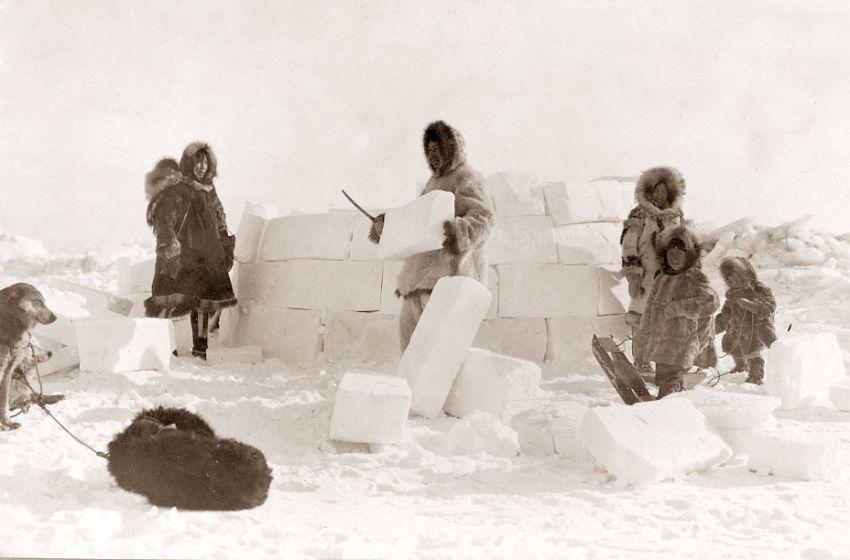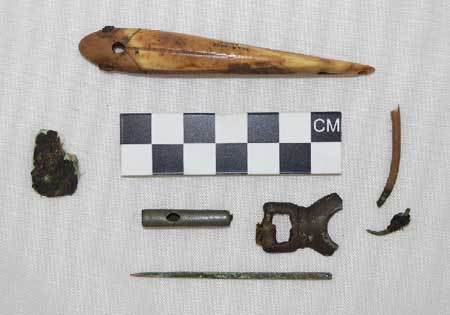“This will cause other people to think about the Arctic differently.” – H. Kory Cooper, an anthropologist at Purdue University.

PHOTO: pixdaus.com
CAPE ESENBERG, ALASKA – A select group of artifacts originally cataloged in 2011 are starting to change the misconceptions many have held about the Arctic Circle, its indigenous peoples, and their relationship with the rest of the world.
The artifacts, including a fishing lure with iron eyes, a copper fish hook, a belt buckle, and a needle were found in the site of a 900-year-old house in northwestern Alaska. It was once home to a tribe called the Thule, who were early ancestors of the modern Inuit.

PHOTO: westerndigs.org
What was so surprising about a small number of seemingly ordinary objects? Well, according to the researchers working there, the artifacts aren’t locally made. For a site that predates European contact by hundreds of years, this came as a shock to many historians.
How do they know these artifacts weren’t made by the Thule? That comes down to an understanding of the native culture. The Thule did use the raw materials available to them, like copper, iron, and even meteorites, but they didn’t smelt their own metals. The buckle found at the site isn’t made from natural, raw iron or copper, but a leaded alloy.
The archaeologists didn’t have a way to date the metal itself, but luckily for them, the buckle came with a leather strap. Using radiocarbon dating, they discovered the strap, and thus the buckle and its neighboring artifacts, are over 800 years old, meaning they definitely predate European contact.
So, if the Thule didn’t smelt their own metals, and so they didn’t create the buckle themselves, and they didn’t trade for it from Europeans…where did they get it?
Lead researcher H. Kory Cooper has a theory.
“We believe these smelted alloys were made somewhere in Eurasia and traded to Siberia and then traded across the Bering Strait to ancestral Inuits people,” Cooper explained. “The belt buckle also is considered an industrial product and is an unprecedented find for this time. It resembles a buckle used as part of a horse harness that would have been used in north-central China during the first six centuries before the Common Era.”
This find all but confirms that the Thule had a trade route linked to Siberia and Asia. It was a narrative that existed in Inuit oral history and a few other archaeological finds, but until now, the commonly accepted view of the Arctic was that it was completely isolated until the Europeans discovered it in the late 1700s.
The researchers working on the Alaskan site now believe that an indigenous trade route of native copper once existed between the native Alaskan peoples, Siberia, and China. It’s a belief in direct opposition to the usual narrative people assign to the area.
Finds like this are a firm reminder that ancient cultures did not exist in a vacuum. Many nations, cultures, and tribes that existed across the known human world beyond Europe communicated and traded with each other. Very few lived in as much isolation as we usually think.
The find in northwestern Alaska has been referred to as “remarkable”. Archaeologists will be continuing to excavate the area in hopes of finding more remains of daily human life in the area. H. Kory Cooper and his colleagues published their findings in the October issue of the Journal of Archaeological Science.
“Some have presented the Arctic and Subarctic regions as backwater areas with no technological innovation, because there was a very small population at the time. That doesn’t mean interesting things weren’t happening, and this shows that locals were not only using locally available metals but were also obtaining metals from elsewhere.” – H. Kory Cooper.

